Top Photo: Eastern bluebird eggs.
There have been strange goings-on along our little bluebird trail here at the museum. Two nest boxes which had had healthy chickadee nestlings have been discovered to now have dead or missing nestlings or eggs from the nests. One nest box is still unchanged and has bluebird nest material within. One previously empty nest box has what appears to be a clue in the fatalities and disappearances of our chickadee nestlings, two twigs.
——————————
The nest box at the Cow Pasture, after being empty so far this season, now has two twigs inside its gray stained exterior. What cavity nesting bird makes a nest of twigs? A house wren (see bottom of post).
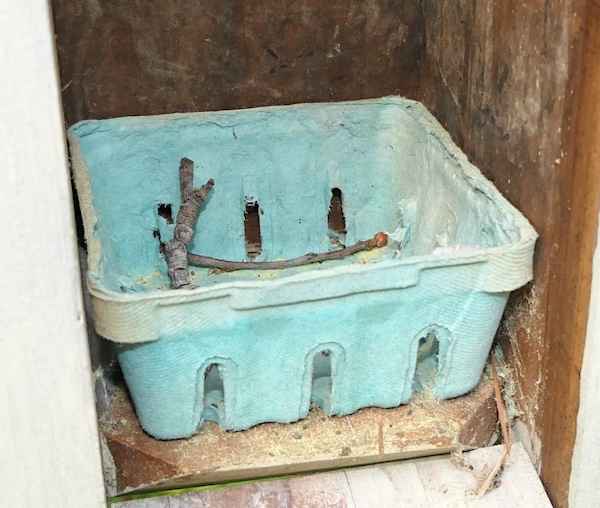
The Explore the Wild nest box had four or five chickadee nestlings in the nest last week (difficult to see whether all five eggs had hatched among the jumble of nestlings). Today there were three chickadee nestlings that I could see.

The Sailboat Pond nest, which held three chickadees a week ago now has one dead, partially skeletonized nestling and two missing nestlings (see bottom of page).
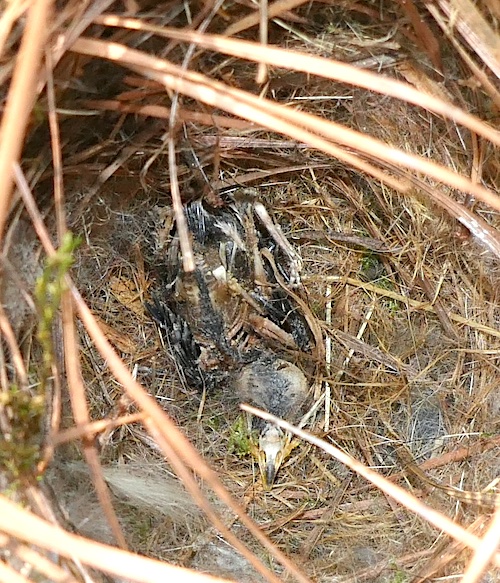
The story continues at the Into the Mist nest box where last week there were three nestlings and two as yet unhatched eggs. This morning we found one dead chickadee nestling, three missing nestlings, and one unhatched egg in the nest (see bottom of page).
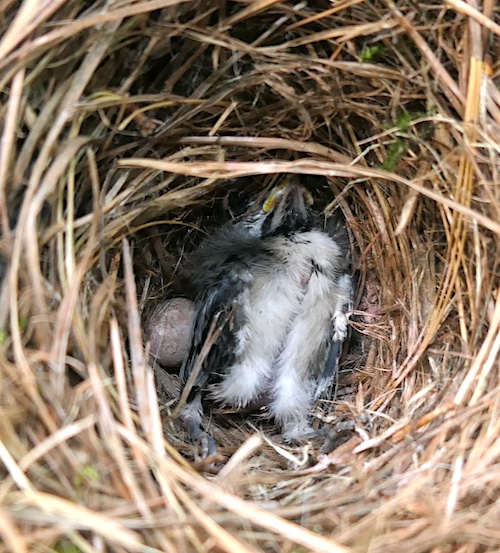
It was a happier scene across the street and far away from the carnage on the north side of our bluebird trail. The Parking Deck East nest had four bluebird hatchlings last week. It still has four bluebird nestlings in its nest.
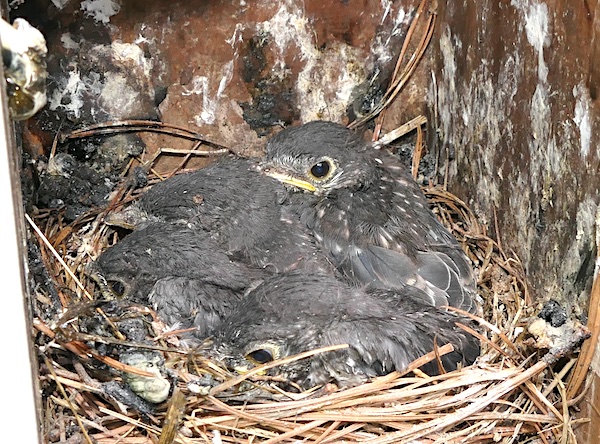
Like wise, the Parking Deck West nest box is untouched. It still has a partial bluebird nest inside.
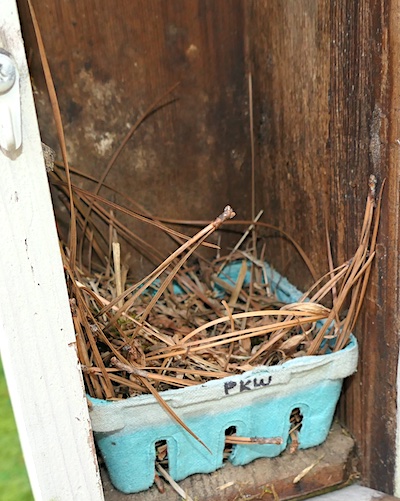
———————————
(See here)
So what’s going on with the dead and missing nestlings? It seems obvious that something got into the two chickadee nests and killed and removed at least some of the nestlings. The predator guards which are mounted on each nest box pole have, in the past, been very successful in keeping out raccoons, snakes, and whatever other predator that might want to snack on nestlings.
Even if the guards failed to keep out predators why didn’t the raider take all the nestlings and eggs. Once a predator gains access they usually stay for the entire meal. Both of the ruined nests had at least one dead bird and perhaps an egg left in the nest. No self-respecting raccoon or rat snake would leave behind such delicacies.
No, it wasn’t a predator looking for a meal that killed and removed those nestling chickadees, it was done in the name of competition. It was another cavity nesting bird looking for an advantage in the reproduction race. A battle over precious nesting space.
My first clue to what had happened here was when I got back to my office and downloaded the photos I take each week during nest box inspections. There, in the berry basket at the bottom of the nest box at the Cow Pasture were two twigs that I hadn’t seen while at the nest itself. The twigs are a sure sign of house wren activity.
I haven’t heard or seen a house wren yet this season, but the twigs in the box definitely say house wren. No doubt about it. And what are house wrens infamously known for, trashing other cavity nesting birds’ nests, eggs, nestlings and all.
Unlike a predator, the wren would simply kill the nestlings and poke holes in any eggs in the nest, leaving the carnage behind for all to see. They typically toss the remains out of the cavity, the nestlings, the eggs, even the nest material. To the ground with the lot of it.
What started as a healthy, successful nesting season for the local chickadees has ended in a mess for at least two pairs of the little song birds.
Now, we wait to see if the house wren or wrens actually use any of the nest boxes that they’ve altered so drastically. The male house wrens usually arrive first in spring. They may build several nests before a female first appears. She may use one of the nests, or trash them all and build her own. The chickadees have paid the price for the wren’s excessive plunder. What will happen next?
See you next week.
Ranger Greg